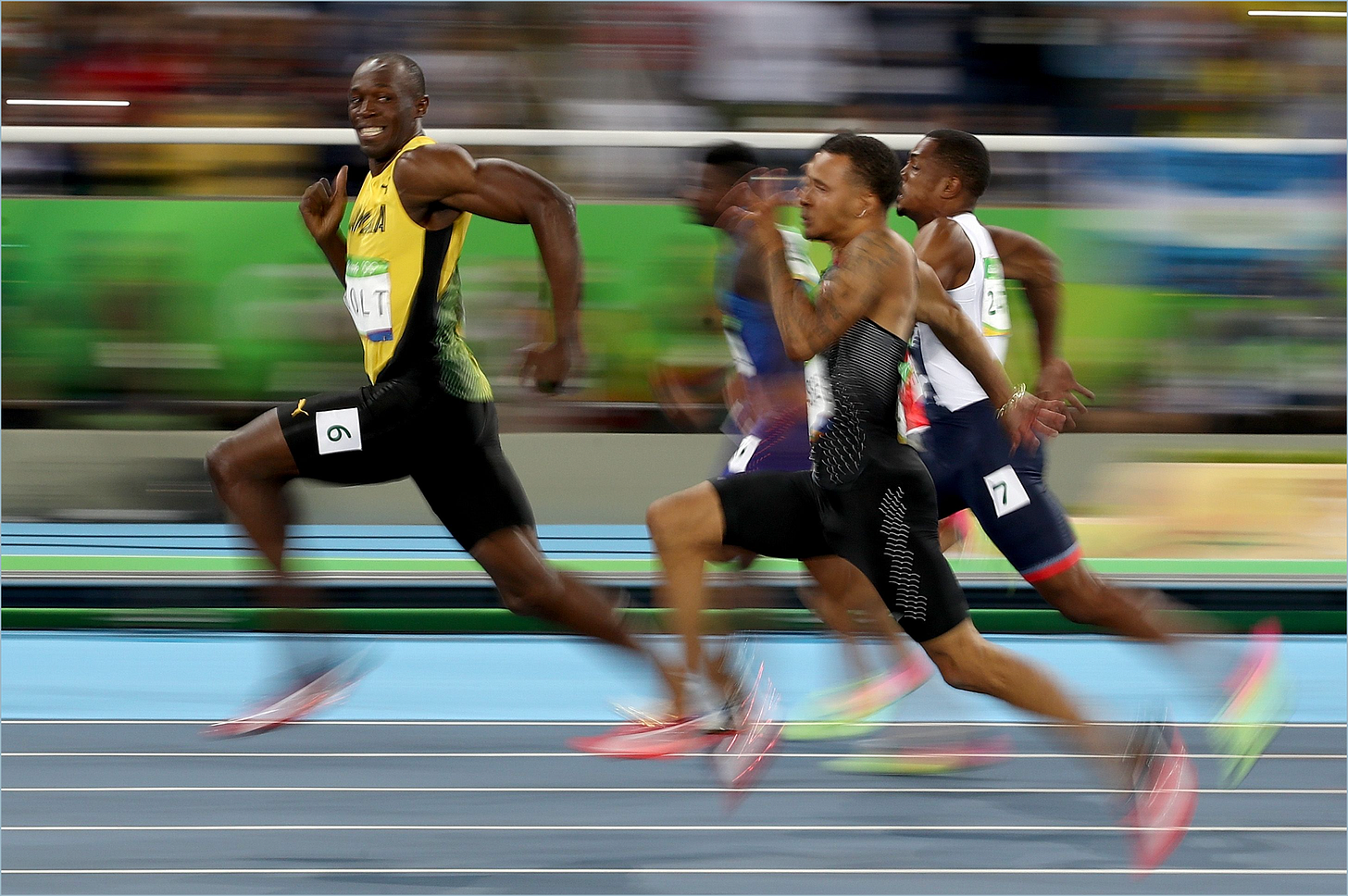Sprint Mechanics and Writing (#19)
Finding the balance between effectiveness and efficiency in biomechanics and documentation
Those of you who know me (Gabe) will know that I’m obsessed with track and field. I began running in high school, pole vaulted at the Ohio state championships, competed in decathlon at university, and now continue my career as a post-collegiate 400m hurdler. I love my sport.
Last week, I was training with my coach and another hurdler. After I ran an interval over the hurdles, my coach gave me some feedback: I needed to keep my trail leg closer to my body. When my trail leg drifted too far from me, it threw my whole body off balance. I made a mental note and prepared for the next rep.
While I got ready, my training partner ran his interval. I saw that his trail leg also drifted a bit far to the right, so I remarked to my coach, “I guess we both have the same problem!”
Coach shook his head. “No. Actually, you don’t,” he replied. “When your trail leg gets too far from you, it throws off your balance. But when James’ trail leg gets away from him, he remains pretty stable.”
Both of us had the same technical issue – a wide trail leg. And yet, this technical flaw had two different effects. For me, it jeopardized my ability to maintain forward momentum off the hurdle. For James, it was just a quirk.
Only I had to fix my trail leg.
Something about this lesson stuck with me after the session. I realized that the best technical writers, like the best coaches, must understand the difference between what is effective and what is efficient.
Effectiveness vs. Efficiency
Let’s define terms:
Effectiveness is about alignment with an ideal. In sprinting, the elite coach will understand a biomechanical model that maximizes force and speed output, including foot placement, stride length, step frequency, and posture. In writing, the seasoned author will know how to structure content in a way that reflects industry best practices, including a clean information hierarchy, consistent style, and clear progression of thought.
Efficiency is about adaptability under constraint. In sprinting, the elite coach will recognize how an athlete’s body naturally moves to minimize friction around limits in mobility, explosiveness, or strength. In writing, the seasoned author will recognize an article’s real-world conditions, like tight deadlines, mixed audiences, or unclear specs.
More succinctly, effectiveness is the blueprint, but efficiency is what you build when the ground is uneven.
Now, it’s important to call out that effectiveness and efficiency are not opposites. This isn’t an either-or choice. Rather, these qualities should be complimentary, and the role of the coach or writer is to discern when and where to emphasize the qualities.
Keep reading with a 7-day free trial
Subscribe to Refined Draft to keep reading this post and get 7 days of free access to the full post archives.




